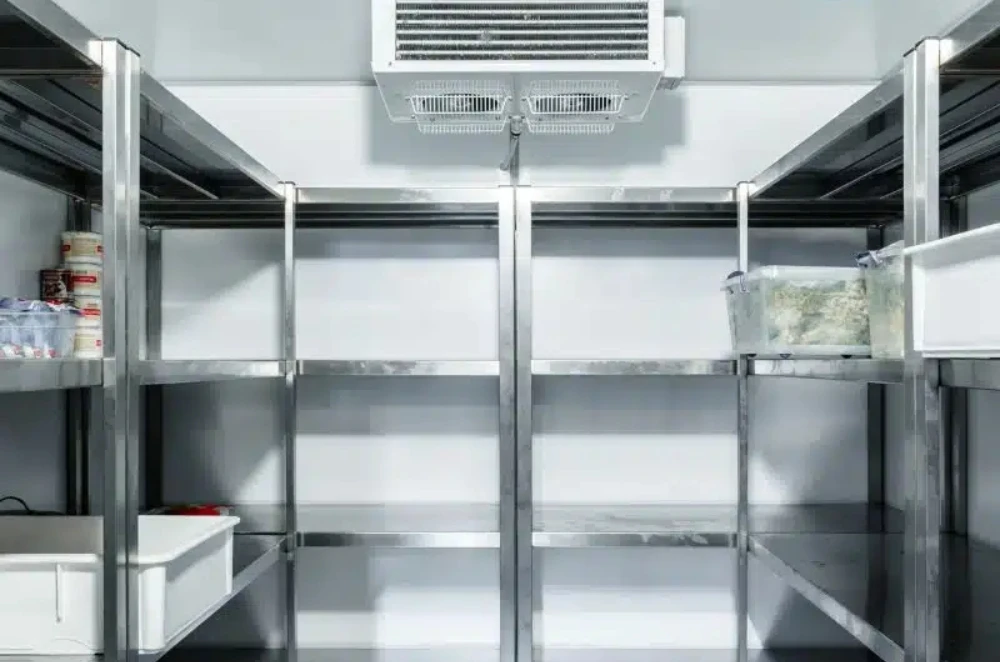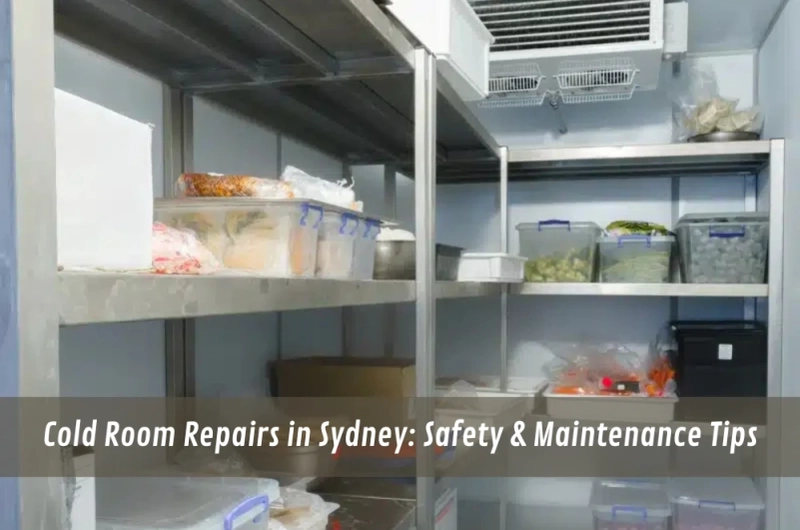When you rely on a cold room to keep your goods chilled, even a short breakdown can cost more than just comfort—it can cost thousands in spoiled inventory. If you're running a restaurant, florist, or warehouse in Sydney, you'll know how vital cold room maintenance is to avoid unexpected repairs and health compliance issues.
But how do you spot problems early, keep your cool room running efficiently, and know when to call in the pros? Let’s break down what every Sydney business owner should know about staying cool—literally.
Why cool rooms fail: early warning signs
Like any system, cool rooms give off signals before a major breakdown. Recognising them early can mean the difference between a quick fix and a costly repair.
Here are a few red flags to watch for:
- Inconsistent temperatures – fluctuating readings can indicate a failing thermostat or blocked airflow
- Ice build-up – may suggest poor insulation or frequent door openings
- Strange noises – rattling or grinding often point to fan or motor issues
- Higher electricity bills – inefficiencies could mean overworked compressors
From experience, I once walked into a client’s commercial kitchen and instantly noticed a damp, musty smell. Turned out, their drainage system was backed up, causing pooling behind the shelving. That minor issue had started corroding internal components. A routine inspection could’ve caught it a month earlier, saving a four-figure repair.
Another time, a bakery in Inner West called in after noticing their cakes weren’t setting properly. The issue? A cracked fan blade was reducing airflow. Fixing it took under 30 minutes. But left unchecked, that small fix could’ve led to a burnt-out motor and complete shutdown.
The link between repairs and refrigeration safety
If you're tempted to delay fixing that odd noise or warm patch in the cold room, keep this in mind: the stakes are high, especially when food safety is involved.
Australia has strict refrigeration safety standards that apply to many businesses operating commercial cool rooms. Failures can lead not only to stock loss but also compliance fines, safety risks, and damage to your brand's reputation.
Here’s where safety ties directly into routine maintenance:
- Safe handling of refrigerants (especially for older units)
- Proper ventilation to avoid gas buildup or electrical faults
- Door seal integrity to prevent warm air ingress
- Sensor calibration to meet health regulations
Non-compliance can be devastating. One Sydney café was temporarily shut down during a health inspection after its cool room temperature registered over 10°C. Turns out the probe was faulty—something that would've been caught with monthly servicing.
How to keep your cool room in peak condition
Ongoing maintenance doesn’t just reduce repair costs—it extends your system’s lifespan and keeps your products consistently safe. Here’s a simple monthly checklist you can follow:
- Inspect door seals – wipe down and check for cracks or leaks
- Check air vents – ensure they’re clean and unobstructed
- Monitor temperature logs – set alerts for any out-of-range readings
- Clean condenser coils – dust and grease buildup cause overheating
- Listen for odd noises – catch mechanical issues before they snowball
If you’re managing multiple locations, keep a shared logbook or digital dashboard. Systems like these help identify trends—like recurring faults or seasonal patterns—that you might miss otherwise.
In our line of work, I’ve seen neglected systems with inch-thick grime clogging the evaporator coils. One customer said the unit "just didn’t feel as cold." A quick clean-up dropped their internal temp by five degrees and improved energy use by 15%. Maintenance doesn’t just prevent problems—it actively boosts performance.
When to repair, and when to replace
Not every issue means you need a brand-new unit, but knowing where to draw the line helps you budget wisely.
Consider repairs if:
- The system is under 10 years old
- Issues are isolated (e.g. broken fan, faulty sensor)
- Energy bills haven't spiked
- You’ve kept up with maintenance
Consider replacement if:
- Frequent breakdowns are adding up
- Your cold room is over 12–15 years old
- The refrigerant is outdated or non-compliant
- You’re expanding and need more capacity
A café owner in Newtown told us they’d spent nearly $3,000 in piecemeal repairs over two years—compressor, thermostat, then a relay board. We ran the numbers and helped them upgrade to a new system with warranty coverage. Their bills dropped, and stress vanished.
Smart prevention: avoiding cold room emergencies
No one wants to deal with product loss or mid-service breakdowns. Preventative strategies help mitigate those risks, especially if your business depends on uninterrupted refrigeration.
Here’s what works:
- Invest in remote monitoring: get alerts via SMS or app
- Set up seasonal servicing: pre-summer checks are essential
- Train staff on proper door use: Even a few extra seconds open can cause temperature spikes
- Keep a backup plan: know who to call and what your insurance covers
It’s also worth educating your team on commercial refrigeration tips so they’re better equipped to flag early issues. Many emergencies can be avoided with better daily awareness.
And don’t forget power protection. A client in the Hills District lost an entire walk-in fridge’s contents after a storm surge caused a power trip overnight. A simple investment in surge protection and alarm integration would’ve saved them thousands.
Choosing the right repair technician in Sydney
Your cool room is a specialised piece of equipment—it’s not a DIY fix, and not every fridge tech is qualified to work on commercial systems.
When hiring a repair tech, look for:
- ARCtick certification – ensures lawful handling of refrigerants
- Experience with your system type – not all cool rooms are created equal
- Fast response times – even a two-hour delay can matter in a breakdown
- Transparent pricing – beware of vague “service call” rates without clear breakdowns
It pays to build a relationship with a local, trusted team before disaster strikes. Have someone who knows your layout, knows your usage patterns, and can step in fast if things go pear-shaped.

Final thoughts: don’t wait for failure
Cool rooms might not be the most glamorous part of your business, but they’re often the most critical. Regular checks, understanding early signs, and investing in professional cold room maintenance can save money, stock, and stress.
Need a deeper dive into preventing cold storage failures? There are excellent resources out there for businesses scaling up their cold-chain logistics or upgrading their food safety protocols.
Your future self—and your inventory—will thank you.


